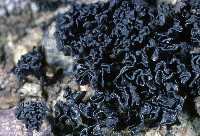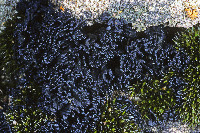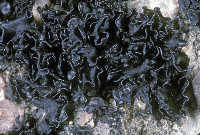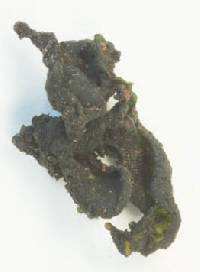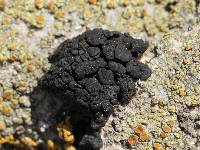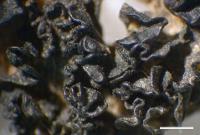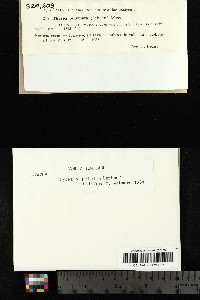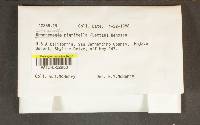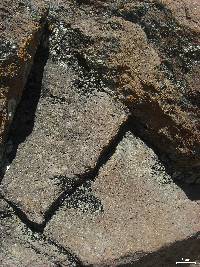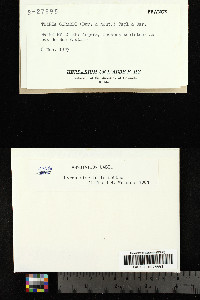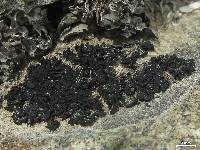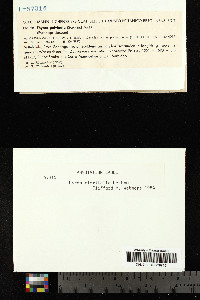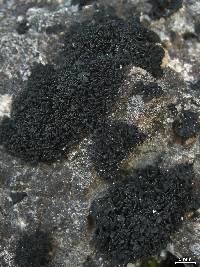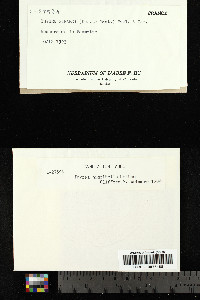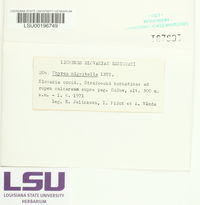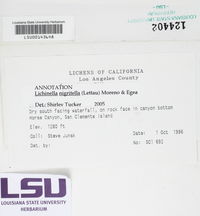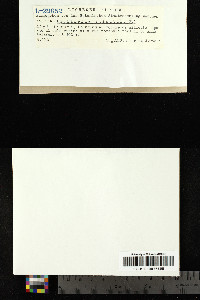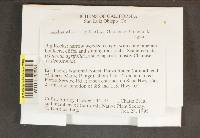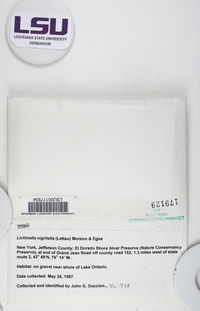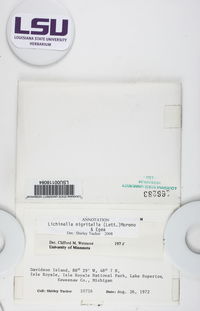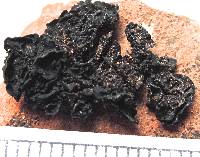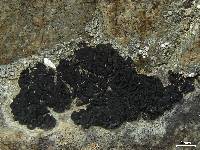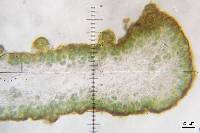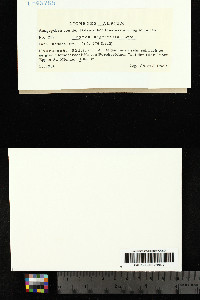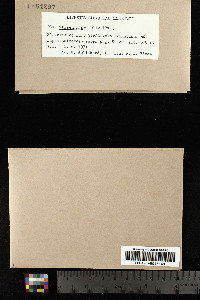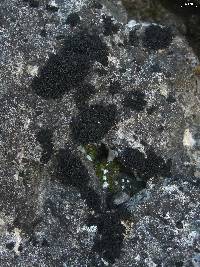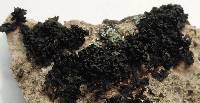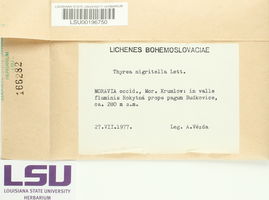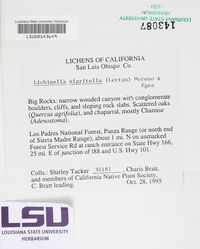
Consortium of Lichen Herbaria
- building a Global Consortium of Bryophytes and Lichens as keystones of cryptobiotic communities -
- Home
- Search
- Images
- Species Checklists
- US States: O-Z >
- US National Parks
- Central America
- South America
- US National Parks
- Southern Subpolar Region
|
|
|
|
Family: Lichinaceae
[Gonohymenia nigritella (Lettau) Henssen, moreThyrea nigritella Lettau] |
Nash, T.H., Ryan, B.D., Gries, C., Bungartz, F., (eds.) 2007. Lichen Flora of the Greater Sonoran Desert Region. Vol 3. Thallus: foliose-fruticose, polyphyllous, medium-sized to large, individual cushions up to 20 mm wide, lobes: broadly rounded at first but soon deeply divided, often with distinctly lobulate tips, erect from the beginning, peripheral lobes loosely adpressed with ascending margin, 1-2 mm wide at the base, 3-4 mm wide at the apices but sometimes dissected into small lobuli, 0.6-1.25 mm wide, 125-150(-200) µm thick, heteromerous, centrally with compact hyphal strand lacking photobiont cells, 50-100 µm thick, reticulate towards the lobe periphery, 50-75 µm thick upper surface: black, dull or somewhat glossy, rarely with patches of grayish pruina on lobe surface of with pruinose lobe tips, sometimes plicate, soon covered by minute globose to scale-like isidia, 0.1-0.3 µm wide lower surface: concolorous with the upper surface, dull, attached by central holdfast or umbilicus Apothecia: thallinocarpous, rarely observed, submarginal to marginal, 0.3-0.6 mm wide, ±round to irregularly elongated, sometimes like glomerate swellings, sessile, convex disc: rough, finally dotted, somewhat paler when moistened; margin: thalline, up to 50 µm wide, indistinct; proper exciple: absent hymenium: separated into partial hymenia by wedge-like intrusions of sterile thalline tissue, 75-100 µm wide, 100-150 µm tall, covered by continuous layer of sterile thalline tissue separated only by the pore-like discs of the partial hymenia, hyaline, IKI+ blue turning wine red; subhymenium: hyaline, remaining continuous, thick, 50(-100) µm thick, IKI+ blue ascus: 16-24-spored ascospores: hyaline, simple, broadly ellipsoid, small, 6-8 x 3-4 µm Pycnidia: globose, c. 100 µm wide conidia: ellipsoid, 4-5 x 1.5 µm Spot tests: all negative Secondary products: none detected. Substrate and ecology: on calcareous and siliceous rock World distribution: North America, Europe, North Africa, Middle East, and possibly Asia Sonoran distribution: Arizona, California, Baja California, and Baja California Sur. Notes: Lichinella nigritella is the most common of the fruticose-foliose members of the genus. It is widely distributed in the entire SW and occurs on various rocky substrata such as granite, rhyolite and limestone. Lichinella nigritella, however, is sometimes hard to separate from the very similar L. cribellifera. The latter lacks isidia, has more adpressed, more rotund, less deeply branched, smooth and often glossy lobes and is usually fertile. It seems to be restricted to siliceous habitats and is less common though also widely distributed. Lichinella iodopulchra may form large cushions when well developed. However, it lacks isidia and the lobes are smaller, less deeply branched with the tips bent downwards. |
|
|
|
Powered by Symbiota







